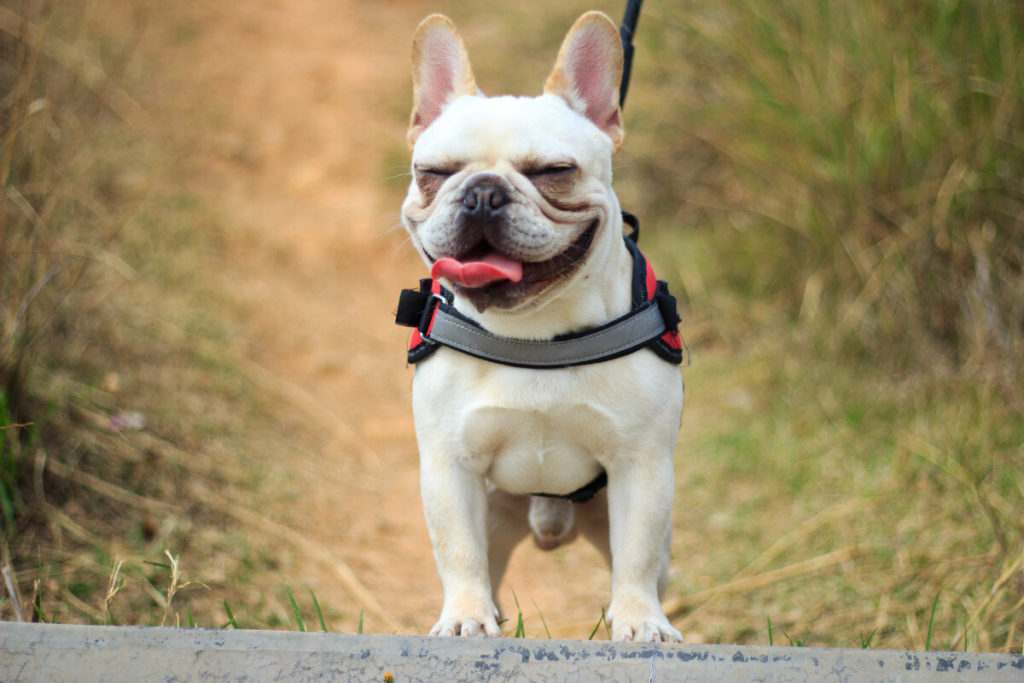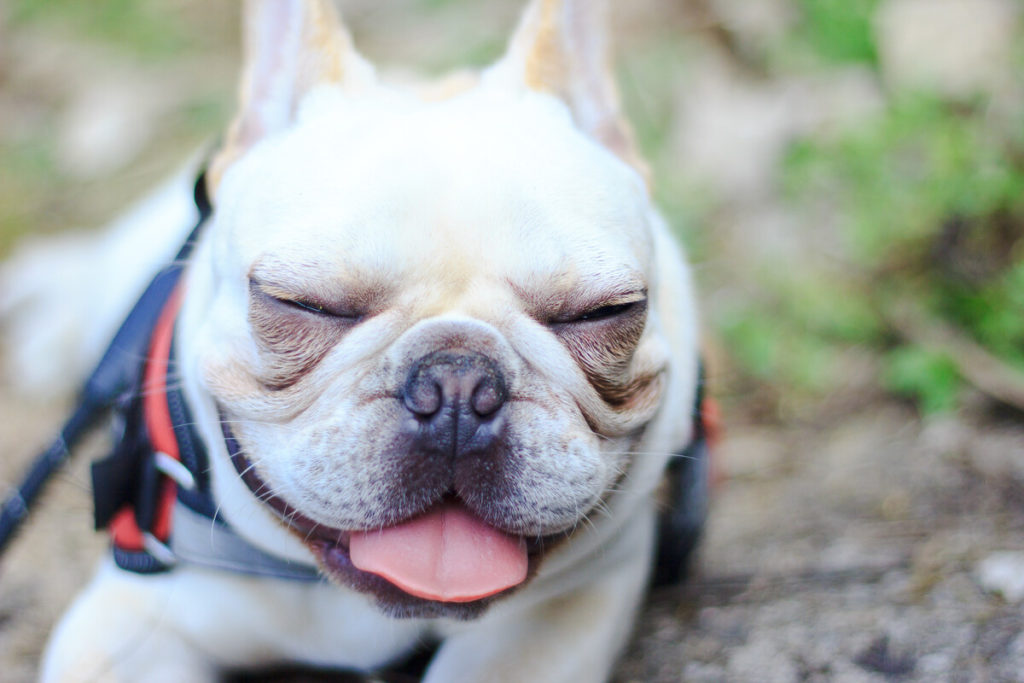French Bulldogs are adorable little creatures. Once you own a French Bulldog, there’s no doubt you won’t be able to get enough of them. There are however some pet peeves that come with French Bulldog ownership. Perhaps one of the biggest ones is their shedding.
French Bulldogs are heavy shedders. The reason for this is they go through a rapid hair growth cycle; the rate at which they produce new hairs to replace new ones is relatively fast. This leads to lots of shedding in a short period of time.
You will soon become desensitized to the sight of French Bulldog fur all over your house; on your floors, sofa, bed, clothes, even on your dinner from time to time. If you don’t have an effective regular grooming plan in place, it can get to a point that drives you crazy.

Proper grooming and care will help control your French Bulldog’s shedding to a manageable level. Before I dive into the detail; heres a summary of my top 20 tips to help minimize and control your French Bulldog shedding so that you won’t be pulling your own hair out:
Get a black French Bulldog
If you’re considering getting yourself a French Bulldog, you can give yourself a headstart in the war against French Bulldog shedding by bringing home a black French Bulldog.
Generally fawn French Bulldogs have double coats and black French Bulldogs have single coats, however there are exceptions and some black French Bulldogs will have double coats, and some fawn French Bulldogs will have single coats. French Bulldogs that have a double coat will shed more than a single coat.
This is because as the lower fur layer, or the undercoat sheds, it constantly pushing out against the overcoat. These undercoat furs gets trapped under the overcoat, and become loose when brushed or washed.
Black French Bulldogs are still heavy shedders, however there is a general consensus amongst French Bulldog owners who have experienced both colours that fawns are the heavier shedders of the two.
Use a deshedding tool
The coat of a French Bulldog is very densely packed, especially if your French Bulldog had a double coat. Deshedding tools are a special type of brush with a stainless steel edge, that is specially designed to remove loose hair that is shed from the undercoat, without doing any damage to the skin.
They’re designed with an edge which pushes through the topcoat, to remove the loose fur from the undercoat, which is the layer that sheds the most.
Even black French Bulldogs with a single coat can have loose hairs that have been shed but are trapped under the coat, using a deshedding tool will free up and remove these loose hairs.
A quality deshedding tool is definitely worth the investment. The Furminator claims to be able to reduce the amount of loose house in your home by up to 90%. There are different options for breed size and coat length, I would recommend the Furminator Short Hairs deShedding Tool for Small Dogs (click here to check the price on Amazon). You will see effective results immediately, and there will be noticable less French Bulldog fur floating around your house.
Recommended duration and frequency is at least 10 minutes, once a week. Use this as a base starting point and you can always adjust from there.
Use a grooming glove
Grooming gloves are another great tool you can use as part of your French Bulldog grooming routine. The gloves serve multiple purposes.
Firstly, gloves can be used as a brushing tool. Like other grooming methods, grooming gloves also serve to pick up and remove loose fur that has been shed by your French Bulldog.
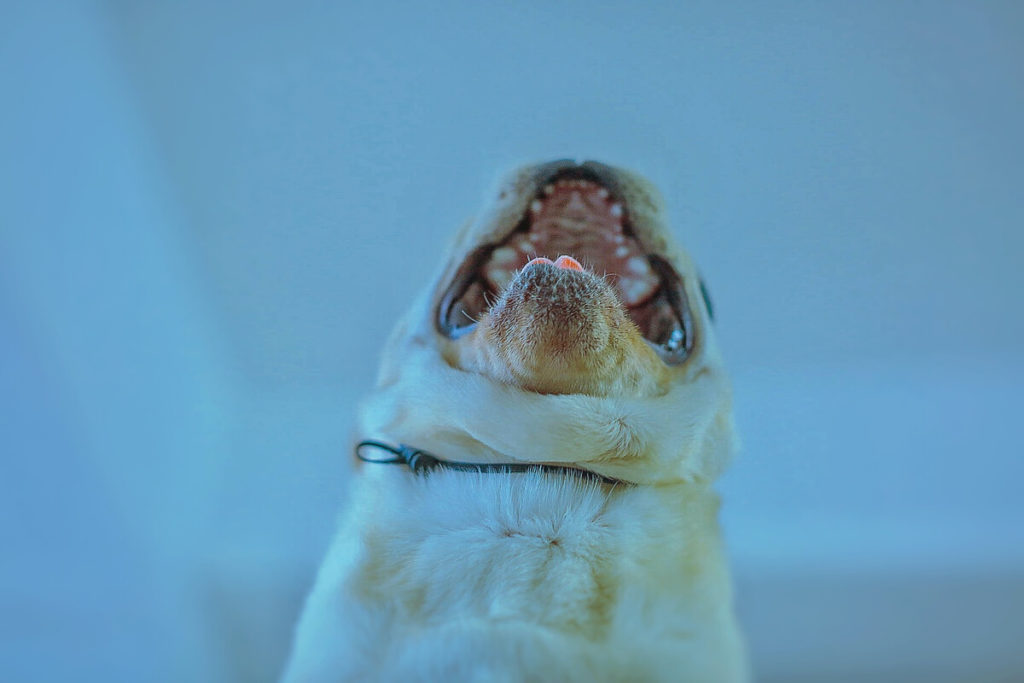
The advantage of grooming gloves over a regular brush is that it helps you get into every nook and cranny on your French Bulldog’s body.
Grooming gloves can also double as a massager. They have little rubber tips embedded throughout the surface which allows you to massage your French Bulldog’s skin, stimulating the circulation of its natural oils and promotes a healthy coat. Just make sure not to apply excessive pressure as French Bulldogs have sensitive skin, and applying too much force can cause skin irritation.
To use the grooming glove effectively:
- If it’s your first time introducing your French Bulldog to grooming, it’s a good idea to have some treats handy so that you can make it a rewarding and fun experience.
- With the glove on securely, use long stroking motions to stroke your French Bulldog, moving in the direction that the fur is growing, not against it.
- Take care to brush gently, especially around delicate areas such as the face, and belly section.
- Periodically stop to remove the fur that is accumulated on the glove.
- If there’s any stubborn knots, use a grooming brush first to untangle these before resuming with the glove.
- Recommend frequency is at least twice a week.
A good glove will not slip off when wet, this makes it good to use during bath time, which is definitely handy as alot of fur will become loose during a bath, as shampoos can loosen up tangled fur.
Grooming with gloves on keeps your hands clean and free from French Bulldog fur and dander, which makes it a great tool if you’re allergic to your French Bulldog.
It can also pick up loose hairs off your bed or furniture, so you can use it to clean up your house without having to bring out vacuum every time.
Finish off with a bristle brush
To finish off your grooming routine, use a bristle brush. Bristle brushes are ideal for all coat types, but for shorter coated breeds like French Bulldogs, choose a brush with shorter bristle length and less spacing in between. Bristle brushes are great for smoothing out hair, stimulating capillaries for natural oil production and spreading natural oil evenly throughout the coat.
Groom regularly and do it outdoors
Grooming your French Bulldog indoors will not solve your problems, it will only give you new ones; you will have a lot of fur around your house. To avoid this, make sure that you do the brushing outdoors.
For the best results, it is recommended that you have a regular grooming routine in place using a combination of deshedding tools, brushes and gloves.
Apart from removing a lot of loose hair, regular brushing prevents painful knots, minimizes pet dander, and can help you spot parasites such as fleas, and also give you another way to bond with your French Bulldog.
Remember not to leave your French Bulldog outdoors for too long. They’re not good with outdoor weather and should be kept in the cool indoors whenever possible, with the exception of when you’re taking them on their exercise.
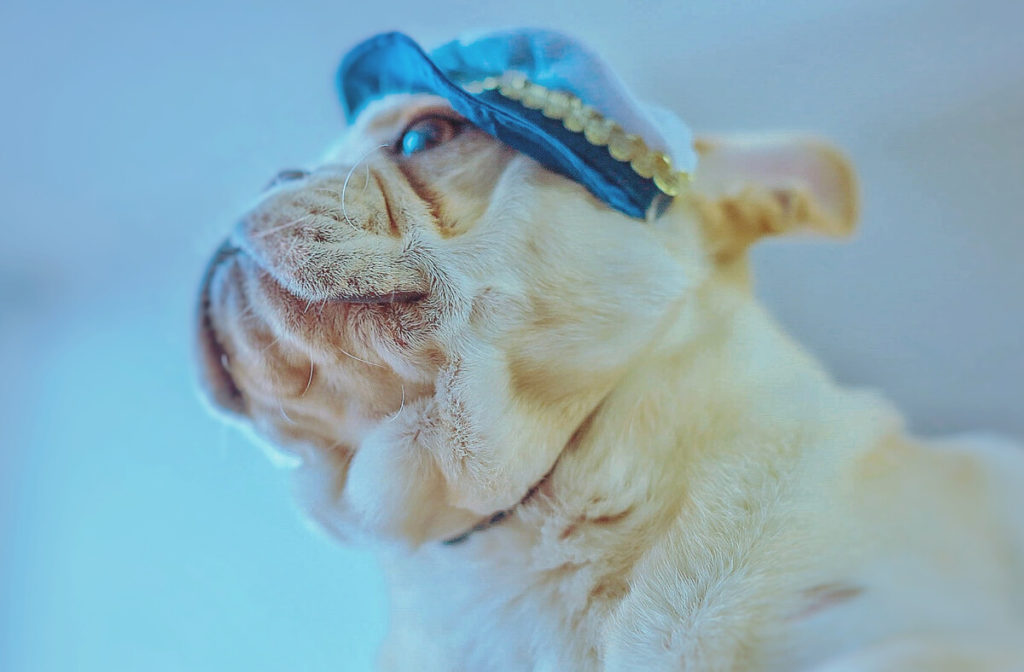
Bathing on a regular basis
If your French Bulldog is shedding excessively, take a look at how often you’re bathing your French Bulldog. Bathing frequency is an important factor in the amount that your French Bulldog sheds. The optimal frequency will be roughly about once a month, certainly no more often than once a fortnight. Too often can lead to other problems such as skin irritation while not frequently enough will lead to a bad odour.
When you wash and shampoo your French Bulldog’s coat, excess natural oils that were holding loose furs in place will be removed, allowing the loose furs to be removed easily. This makes it a perfect chance to groom your French Bulldog in the bath.
Use a deshedding shampoo
Deshedding shampoos can help support your French Bulldog’s coat and skin health, and subsequently reduce excess shedding to some degree. They typically have added ingredients specifically for the purpose of improving coat health, such as omega-3 or omega-6 fatty acids.
Furminator deShedding Ultra Premium Shampoo and Conditioner is a great option as it contains no harmful parabens or chemical dyes and contains many natural extracts aimed to improve skin health, reduce skin inflammation and reduce dandruff; including Calendula extract (from marigold flowers), Papaya leaf, Chamomile, and Malva flower. (Click here to check the price on Amazon). You should consult your vet before use.
Watch out for seasonal changes which can impact shedding French Bulldogs get dryer coats in winter and skin allergies in summer. Remember that the use of deshedding shampoos alone will not be sufficient, and if used should be in conjunction with a regular grooming routine, including some type of brushing listed above.
Dry with a towel or cool hair dryer after bathing
Just after a bath is one of the best times to brush your French Bulldog, as many of the shed furs that were trapped under the overcoat have now become loose.
I don’t recommend leaving your French Bulldog to “air dry” as what tends to happen is as soon as you let them free, they will run around your house, diving into and rolling around in your bed sheets, carpet and any other furniture in sight, leaving behind a heavy trail of wet French Bulldog hair that will stick to anything. This is also known as the zoomies and is quite common just after a stressful situation for them such as a bath (Related: Why Are French Bulldogs So Hyperactive?)
After you bathe your French Bulldog, dry them with a towel, starting with the facial area. Take extra precaution to make sure the folds in between each wrinkle are dried, if left wet this can become a breeding ground for bacteria leading to infections and other health problems. When using the towel, pat them dry, not using excessive rubbing force in an attempt to dry them quicker, as this can irritate their skin.
You can also use a hair dryer to speed things up. Only use cool air on the lowest heat setting, as blowing dry air onto their coats and skin can cause painful burns. If this is your first time using a blow dryer on your French Bulldog, they may be frightened at the sound, so just take it easy and don’t force any uncomfortable situations.
There are hair dryers specifically designed for dogs, which usually have higher airflow and lower temperature outputs compared to normal hair dryers, to suit the needs of dogs. However for a short haired breed like the French Bulldog these are more of a luxury than a necessity.
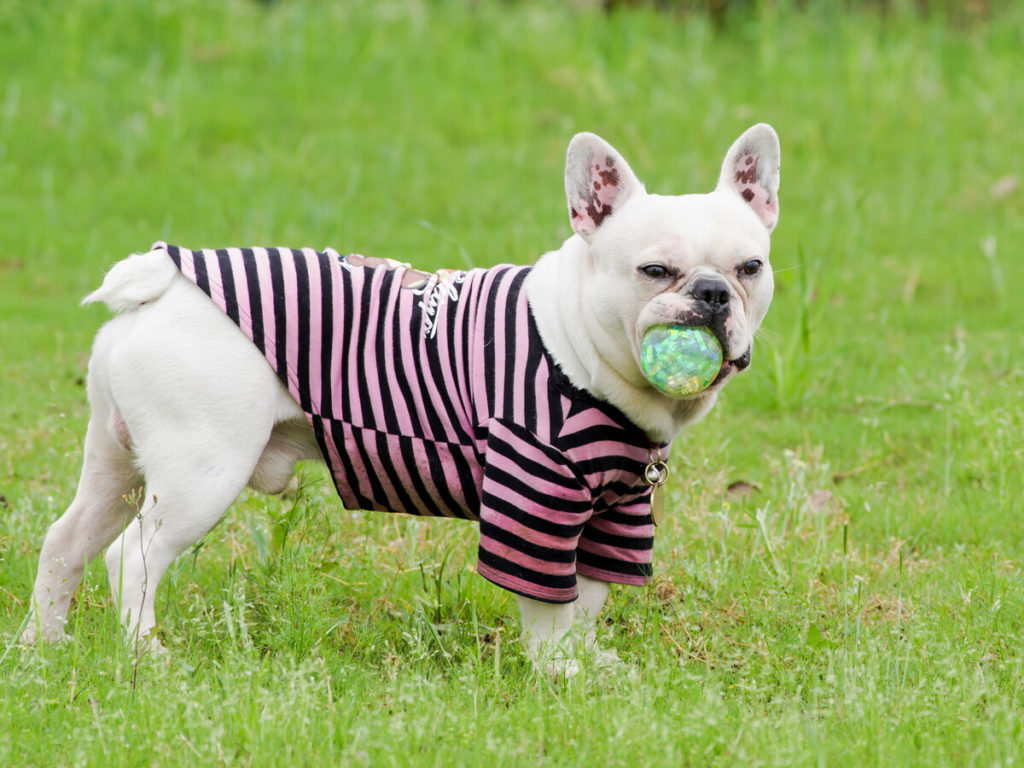
Vacuum regularly
Along with a regular brushing and deshedding routine to remove excess shed hair from your French Bulldog’s coat, an essential part of keeping your French Bulldog’s hair around your home under control is a regular vacuuming routine. When it comes to vacuum cleaners, I highly recommend that you invest in a quality product and it will pay you dividends over the years.
Most brands have pet vacuum models that are designed specifically for picking up pet fur easily, and these are usually a touch more expensive than the regular models. If you can, I would recommend getting one of these
I’ve previously used a Dyson Cyclone V10 Animal Handstick vacuum, although from my personal experience this didn’t work as well as I thought it would especially given its high price point. This may be partly due to the fact that I was living in a carpeted home at the time, but it just didn’t have enough power to pull out the French Bulldog hairs from the carpet fabric.
I recently switched over to a BLACK+DECKER 45Wh 2in1 Cordless MULTIPOWER Pet Vacuum Cleaner, and so far has been working wonders for picking up French Bulldog hairs around the home, both on my tiled living room and my carpeted bedroom (click here to check the price on Amazon).
Invest in a robot vacuum cleaner
Investing in a good vacuum cleaner is great, but this doesn’t take away from the fact that vacuuming your house is a lot of work, especially if you’re doing this on a daily basis. If you have a big house, you may want to also pick up a robot vacuum cleaner. Of course, this isn’t essential but if you do have one there’s no doubt it will make your life so much easier.
Here are the key features you should look for in a robot vacuum:
- First and foremost, the ability to pick up French Bulldog hairs around the house will be one of the biggest deciding factors. Most robots will have a counter rotating rubber extractor
- Automatic scheduling to operate at the most convenient time for you
- Tangle free brushes will come in handy so that you don’t need to remove French Bulldog hair as often
- Automatic mapping and cliff detection via sensors to avoid obstacles
- Dual functionality; i.e. vacuuming and mopping at the same time
- Bagless is much more convenient and more cost effective as they will get filled up quite quickly.
- HEPA filter to remove dander and other fine allergens from the air.
- Edge cleaning ability; this is especially important as French Bulldog hairs tend to accumulate on the edge of your walls against the floorboard skirting
- Virtual barriers, the simplest of which use magnetic strips, with more advanced ones you can set boundaries directly from your smartphone via an app.
- Carpet agitators are a useful feature to have if you live in a carpeted home, as French Bulldog fur can really get caught up in between the fabric of carpet.
- Long battery life and self docking when the battery runs low, for seamless automated charging without having to plug into wall manually
- Smartphone and wifi connectability; this is not an essential feature but will be able to provide you with a lot of data about its cleaning history, set schedules etc.
A robot vacuum cleaner shouldn’t replace your regular vacuum. They won’t have the same vacuuming power just due to sheer size and capability. They are however a very useful addition that can take a huge deal of stress away from cleaning up the aftermath of your shedding French Bulldog on a daily basis, when used in conjunction with your regular vacuum for a deep clean, for example once a week.
Broom in-between vacuum sessions
If you don’t want to splurge on a new robot vacuum cleaner, I would highly recommend getting yourself a broom, as they get the job done but for a fraction of the price. This will only really work for you if you have hardwood or tile floors, not carpet as carpet tends to trap loose furs and a broom will not be enough to pick them up.
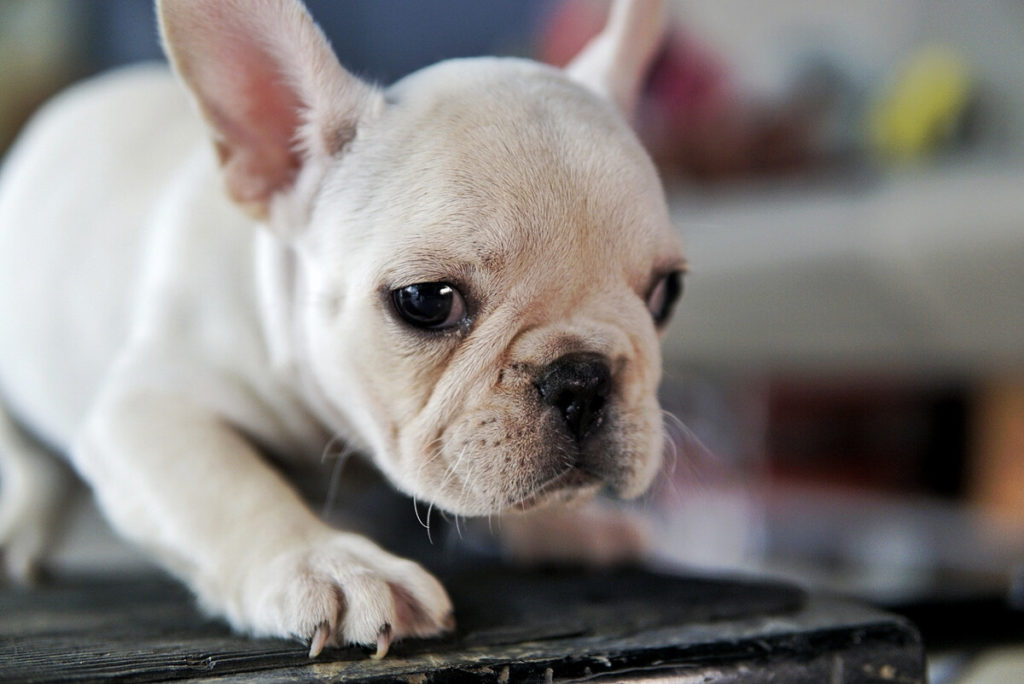
It’s really easy to sweep up French Bulldog fur on the ground in between vacuum sessions and this can be done at any time of day; keeping your house clean at all times without having to vacuum multiple times a day.
Use a lint roller
A lint roller is a great tool to have around your house, to remove all the loose furs that get stuck to your clothing after some French Bulldog cuddling, as well as your furniture after a French Bulldog nap. You can also use them in places such as your cupboards, wardrobe, kitchen benchtops, inside your car, and so on, as once you live with a French Bulldog there’s no escaping the fur.
Lint roll very effective as most of the French Bulldog hairs stuck to your clothes or furniture will stick nicely to the sticky adhesive material with just a once over. Alternatively, if you don’t have a lint roller, duct tape can also do the job, as you will be needing refill sheets in no time.
Pro tip: Leave a lint rollover right next to your main entry door, so that you can use on your clothes before you leave the house.
Nutritional diet
A well rounded, high quality, nutritional diet is essential for a French Bulldog’s healthy coat. Healthy coats that are rich in natural oils will be less susceptible to excessive shedding.
Cheap dry dog foods have a lot of fillers that don’t offer much nutritional value. If your dog only gets this type of food, the chances are that this is contributing to poor skin and coat health.
Look for a nutrient rich food that will not only directly provide your French Bulldog with the nutrients needed for a healthy coat, but also a well rounded one will also help balance out hormones, reducing acne and other related skin issues that are common in French Bulldogs.
So what ingredients should you look for in your French Bulldog’s food? Look for Essential Fatty Acids such as Omega 3 and Omega 6. These fatty acids reduce inflammation, which can help minimize the impacts of allergies and the effect this has on shedding. Omega 3 can also help reduce shedding of dander which is great news if you’re allergic to your French Bulldog.
You can check out my personal recommendation for your staple French Bulldog food on this page. The Royal Canin French Bulldog blend contains three essential fatty acids that are essential for a shinier softer coat and healthier skin:
- Borage Oil (Omega 6)
- Docosahexaenoic Acid (DHA) from fish oil (Omega 3)
- Eicosapentaenoic Acid (EPA) from fish oil (Omega 3)
If unsure about the nutritional needs for your French Bulldog, speak to your veterinarian.
Supplementation
Just like us humans, we aren’t always able to get all of our micronutrients we need from our everyday diet, and the same goes for our French Bulldogs. Luckily, there are ways to supplement specific ingredients that are lacking.
Many dog owners supplement fatty acids as a way to promote their dog’s coat health. This is especially important because although these fatty acids play an important role in our dogs’ health, they are not naturally produced in their bodies, and thus must be introduced via diet and/or supplementation.
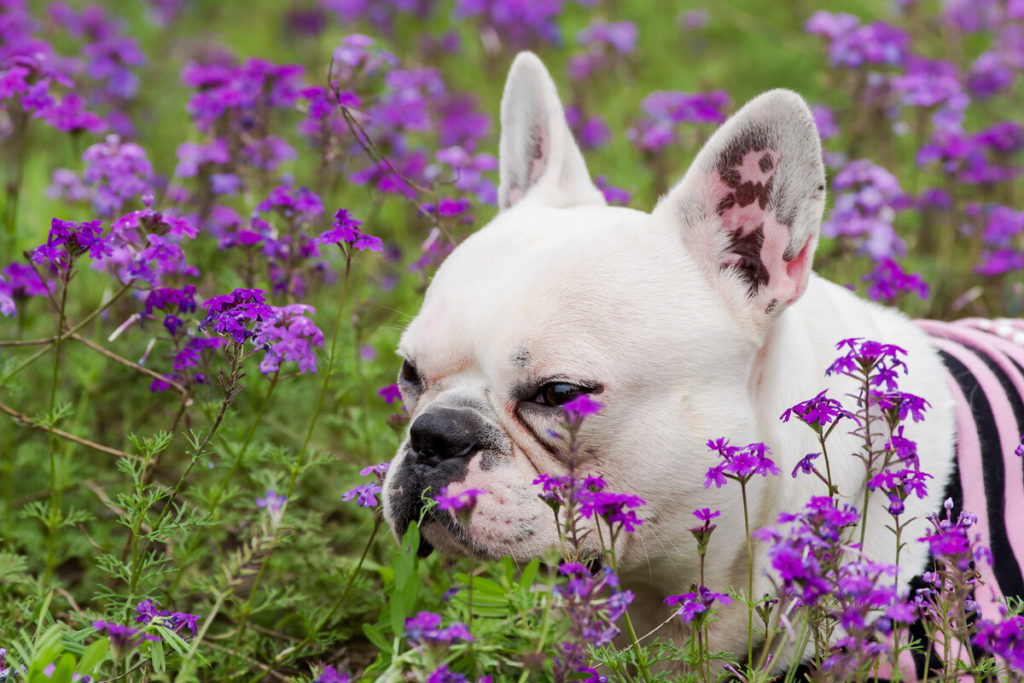
Alongside multivitamins and minerals, essential fatty acids such as Omega 3 and Omega 6 are amongst the most used supplementary nutrients that are used specifically for reducing shedding, moisturizing dry skin and reducing itchiness, reduces dandruff/dander, promoting a vibrant and shiny coat. These fatty acids also has other benefits such as easing inflammation, particular useful for senior French Bulldogs who are prone to arthritis due to their heavy weight on their relatively fragile joints.
Linoleic Acid
- Linoleic acid is an omega 6 fatty acid
- Recommended product: Lambert Kay Linatone Shed Relief Plus (click here to check the price on Amazon). This is a liquid supplement that gives dogs linoleic acid that their bodies cannot absorb from commercial food
- Contains essential fatty acids and vitamins A, D and E, zinc and protein
Fish Oil
- High in omega 3 fatty acids (DHA and EPA)
- Ease inflammation (good for allergies)
Flaxseed Oil (also known as linseed oil or flax oil)
- High in omega 3 fatty acids
- Also contains omega 6 and omega 9
- Unlike fish oil which only contains DHA and EPA, flaxseed oil contains the third omega fatty acid which is ALA.
- Flaxseed oil is the richest source of ALA
- Good alternative to fish oil if your dog has fish allergies or doesn’t like the smell of fish oil
Olive Oil
- High in omega 3 fatty acids
- Also contains antioxidants such as Vitamin E
- Use extra virgin olive oil; not much, about one teaspoon per meal and mix in with dry food (it will work wonders for taste too)
- You probably already have this in your house
- These supplements are usually mixed with their normal meals or given directly, use as per instructions on label. Again, you should ask your veterinarian before you start supplementing anything.
Stay away from carpet
Now, I’m not suggesting that you go ahead and pull out your carpet in your house and replace it with tiles. However, if given the opportunity, for example when moving to a new apartment, I would suggest that you stick to a hardwood or tile floored apartment over a fully carpeted one.
French Bulldog fur tends to get trapped within the fabric, and even with a high powered vacuum can be hard to get out. Hardwood or tiled floors on the other hand will give you a much easier time when it comes to cleaning up the French Bulldog hair around your house.

Match your furniture to your French Bulldog’s color
This next tip won’t necessarily reduce the amount of shedding from your French Bulldog, but it will make it more manageable. French Bulldog fur is very clingy and will stick to all of your furniture, so in order to make the fur less noticeable, all you have to do is match your furniture to the color of your French Bulldog.
For example, I have a black French Bulldog and all of my furniture I have bought after bringing him into the home has been dark grey. If I were to get a more contrasting color, such as beige, the hairs would instantly become a lot more noticable. The same goes vice versa, if you have a fawn French Bulldog, stick to lighter furniture. This is more so for those who are planning to buy new furniture anyway, I wouldn’t go out and buy a whole new couch just for this reason, as it’s just a way to give yourself a mental break by seeing less fur in your home.
Keep your French Bulldog hydrated
Making sure your French Bulldog is hydrated can also help in reducing shedding. Ensure they always have access to fresh clean water, and encourage them to drink water as dehydrated skin may cause shedding. This is especially important if your French Bulldog’s diet mainly consists of a dry kibble, like mine.
A rule of thumb I found for the standard amount of water your French Bulldog should be drinking daily is around 50 – 60 ml per kg bodyweight, for example 500-600 ml if your French Bulldog is 10kg, although this may need to increase in the summer. If you’re going out on a trip with your French Bulldog, make sure to bring a dog bowl and some extra water for your French Bulldog.
Pest control
Make sure you have your French Bulldog’s pest control management in place. Bites from fleas, lice, mosquitoes, dust mites and other insects can cause skin irritation and itchiness as a side effect, amongst the diseases and potentially fatal impacts of these harmful parasites.
If your French Bulldog does get bitten by one of these insects, they are likely to scratch the affected areas, causing the affected skin area to become more irritated skin, which in turn causes more hair loss and loose hairs to be released.
Therefore, having an effective pest control strategy is not only essential for your French Bulldog’s overall wellbeing, but also can reduce the amount of loose hairs around the house.
So how can you protect against these harmful parasites? There’s two main methods of protection that is widely used by dog owners. Personally, I use the NexGard Dog & Flea & Tick Control Chewables for my French Bulldog. If mixed in with kibble during a regular meal once a month, it goes down easily and I haven’t noticed any side effects.
An alternative to chewables are flea and tick protection collars. These work by slowly releasing active ingredients into your French Bulldog’s coat, in low concentrations. The advantage of this is you can set and forget, as they usually last for about 8 months.
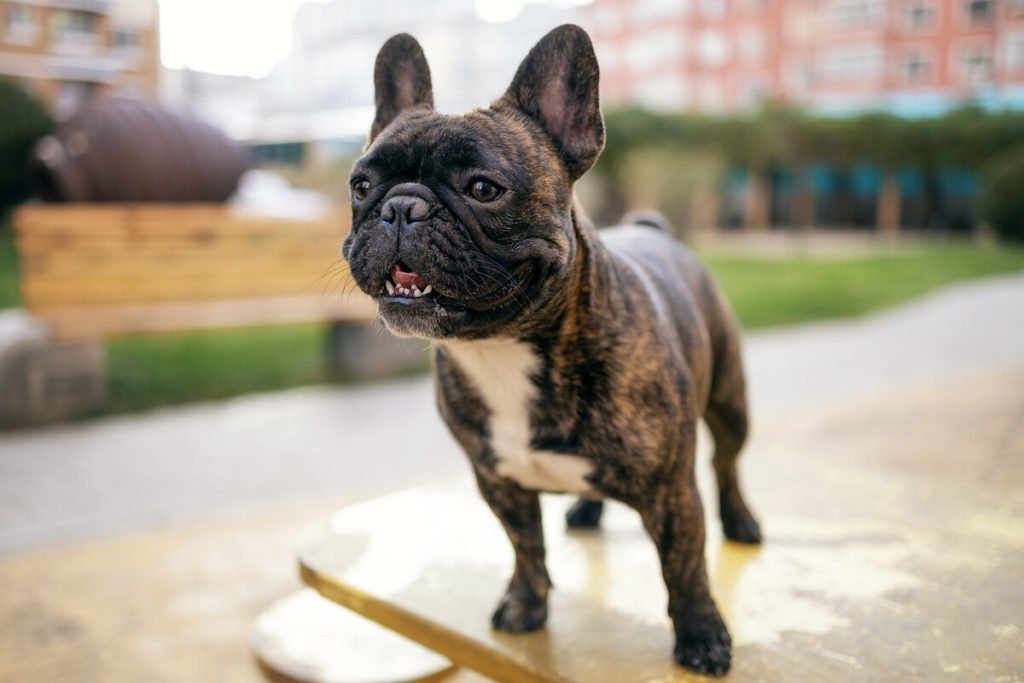
Just a word of warning, upon researching the user reviews, I found that some dog owners have had some negative experiences with their dog after experiencing some adverse side effects from the active ingredients from both the collar and the chewables. I would suggest that you speak to your veterinarian to seek advice about how to test the right product for side effects before deciding on a treatment plan.
Allergy control
Similar to pests, if your French Bulldog has allergies that aren’t being treated effectively, this can lead to higher than normal shedding. Some of the side effects of allergies include irritated and itchy skin, which if not controlled will cause your French Bulldog to scratch the affected areas.
By scratching excessively, this aggravates the loose furs that have been shed from the undercoat and trapped under the overcoat, causing more fur to be removed from your French Bulldog’s coat and around your home.
Do not shave your French Bulldog!
Think twice about the conflict of interest before you take on the advice of a pet groomer that advises you to shave your French Bulldog. Despite what you may be told, it won’t actually reduce the amount of shedding, although it may reduce the length of the fur shed. This may actually make it harder to clean up shorter furs around the house.
There is also a big misconception that shaving off fur will keep French Bulldogs cooler in the heat. It is in fact the opposite, French Bulldogs need their coat which acts as a layer of insulation to keep the heat out. The coat also acts as a layer of protection against harmful sun rays and from fleas.
Related Questions
Do French Bulldogs shed all year round?
Yes, French Bulldogs breed constantly all year round, not seasonally like other breeds. However it is said that French Bulldogs shed more in the spring just after the winter when their coats are the thickest
What causes excessive shedding in French Bulldogs?
French Bulldogs are heavy shedders, but ‘normal’ French Bulldog shedding is different to excessive hair loss. You can tell if your French Bulldog is excessively shedding by looking at the pattern of hair loss, normal shedding will generally be evenly distributed throughout the whole coat, whereas excessive shedding is typically characterised by patches of uneven hair loss. If you do notice this, speak to your veterinarian to help you identify the cause and build a treatment plan.



